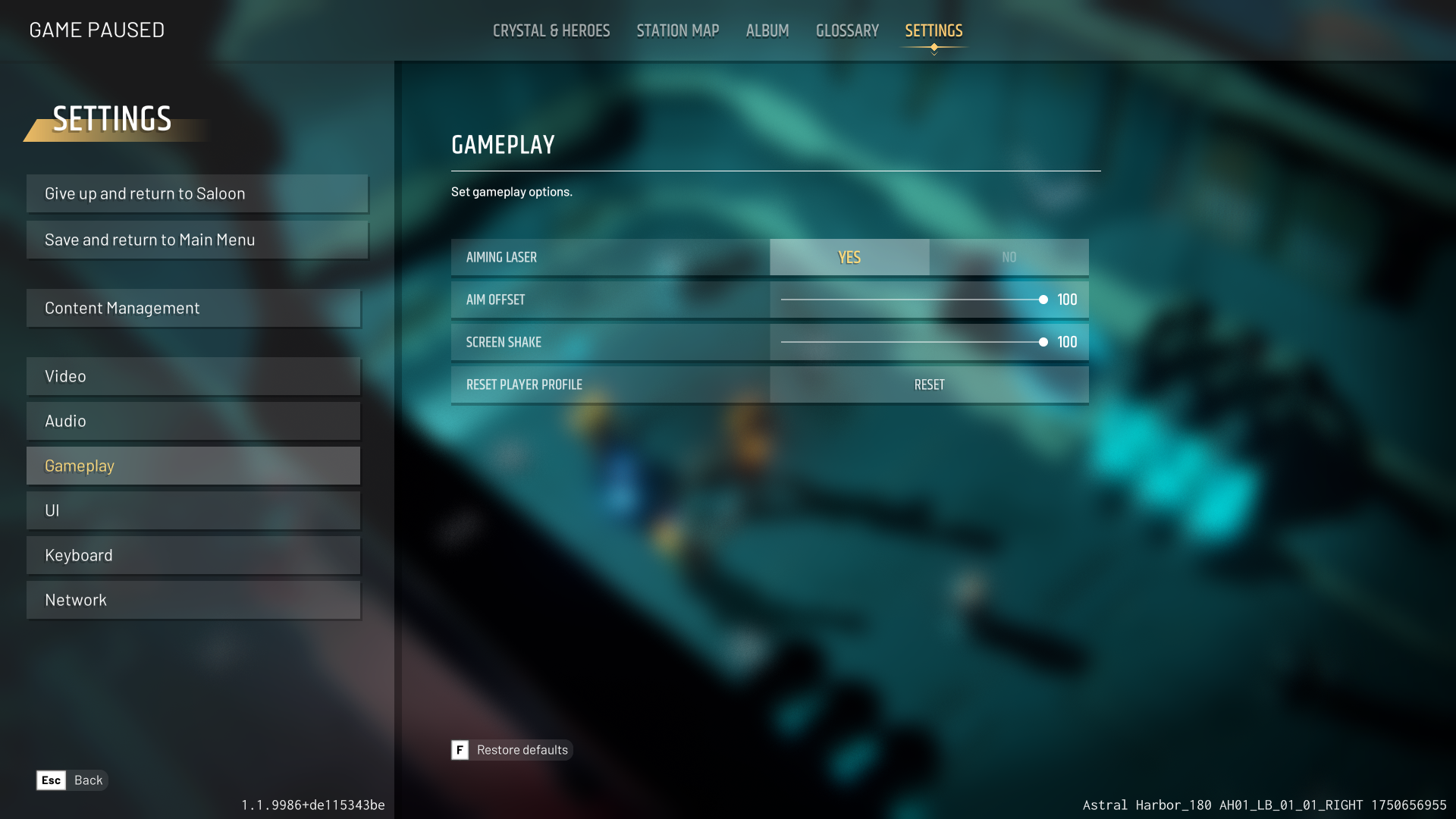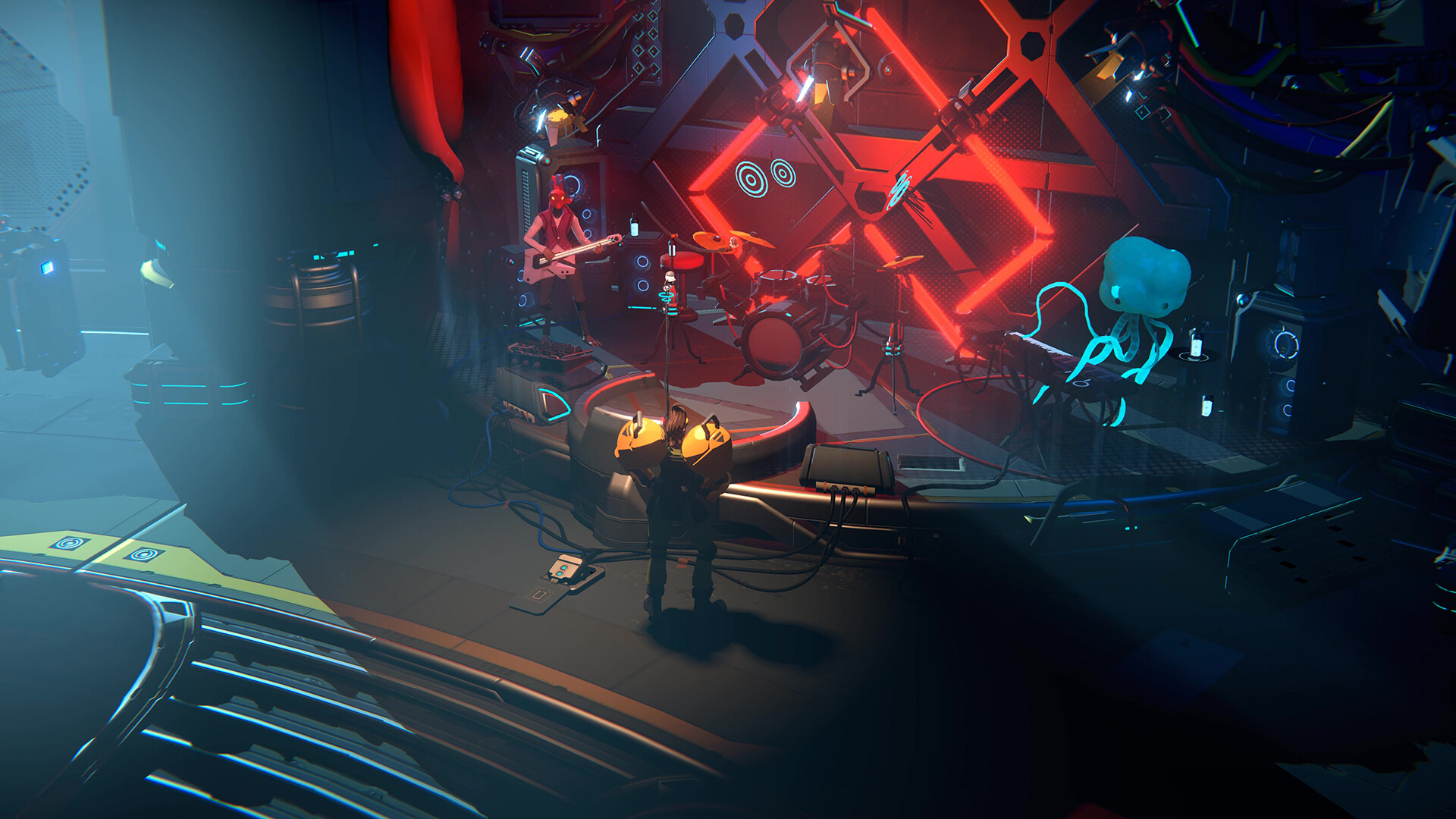TechRadar Verdict
Endless Dungeon may look sleek and polished, but this isometric rogue-like offers little depth. Despite a strong opening, the paper-thin narrative, stock characters, and repetitive combat mechanics do little to maintain interest.
Pros
- +
Excellent music
- +
Sleek visual design
- +
Engaging opening
Cons
- -
Unsatisfying combat encounters and unfulfilling game loop
- -
Dull characters and story
Why you can trust TechRadar
Platform reviewed: PC
Available on: PS5, PS4, Xbox Series X|S, Xbox One, Nintendo Switch, and PC
Release Date: October 19, 2023
Endless Dungeon’s aspirations to fuse the tower defense and roguelike action RPG elements fall flat, hampered by a game loop that just doesn’t satisfy. Dull characters and repetitive mechanics make traveling through the sci-fi corridors of Endless Dungeon’s abandoned space station a chore, despite an excellent soundtrack and impressive visual style.
Developed by Amplitude Studios, Endless Dungeon takes place in the ‘Endless’ universe, the same setting as its well-received 4x sci-fi strategy series Endless Space and its previous roguelike tower-defense mash-up Dungeon of the Endless. The premise is simple: a group of heroes has crash-landed on a mysterious space station. To escape, they’ll need to guide a fragile robot through the station’s maze of procedurally generated corridors to the core; a process that will set them free. Should you perish - and you will - you’ll be “reloaded” back at the heroes’ base camp: a visually pleasing space-western saloon.
The game’s characters and main storyline are shallow, doing little to keep you invested
Each hero has their own passive, active, and ultimate ability, as well as their own starting firearm which can be swapped out over the course of a mission. Every room in the station also features several nodules on the floor, where you can set down turrets of various kinds. As you adventure through the station, you amass resources, using them to research more advanced turrets, upgrade your heroes, or construct the turrets themselves.
On paper, it’s a compelling setup, but, in practice, Endless Dungeon fails to provide the moreish, repeat-friendly game mechanics that keep roguelikes interesting. The game’s characters and main storyline are also shallow, doing little to keep you invested in the protagonists’ quest to reach the station’s core.
Live, die, repeat

The arsenal of weapons on offer feels samey and uninspired. Though different sorts of firing patterns are available, their effects aren’t quite distinct enough to keep things from going stale. Whether the attack takes the form of a hail of bullets or a beam of lightning, your shots collide with the enemy in the same fashion, doing little more than to lower one of the many spongey, walking health bars heading your way. Without any reloading or attack-timing mechanics, it’s optimal to continually spam your weapon of choice, making the process of fighting artless, and hampering each weapon’s ability to distinguish itself.
The turret management system has slightly more to offer, providing a wide selection of different emplacements, each with a range of different damage types and effects. Some simply launch projectiles while others provide buffs and debuffs, like protecting allied turrets or slowing enemies. There’s genuine variety here. The problem is that, since you’re constantly having to escort the crystal bot as it makes its way from objective to objective, you’ll rarely get to see the turrets you’ve constructed work first-hand. Instead, the only indicators of their effectiveness are in the thinning number of blips on your minimap. In Endless Dungeon, you will rarely be able to see the fruits of your turret-placing labors up close.

Exploring the Saloon for the first time was a genuine joy. It's a gorgeous realization of the classic sci-fi bar trope. Neon lights and catchy music do a great deal to set the scene in this visually appealing environment. After every death, it brought me no small comfort to know that I’d be returning there.
The game uses a party system which does add some variety to the mix. When you venture out from the Saloon, you’ll put together a team of two (later three) heroes and, in single-player mode, you’ll be able to alternate between controlling each one. However, though these heroes have distinct abilities, they rarely feel distinctive in play. This is because all of them use one of two weapon types: light guns or heavy guns. The majority of the time, Zed, a sci-fi soldier-type that's straight out of Aliens, plays indistinguishably from Blaze, the robot cowboy because both use the same roster of heavy weapons. Plus, with only one active ability each (two if you include their ultimates), the characters’ distinctive features shine only infrequently.
The party system does yield a little more in the game’s co-op mode, where players can work together to time their abilities and cover ground more strategically than their AI counterparts. However, this comes at the cost of the variance and strategy that comes with being able to liberally jump between heroes in single-player mode.
Sign up for breaking news, reviews, opinion, top tech deals, and more.
Empty space

The roster of characters themselves, though visually appealing, offers little tangible depth. Though each has their own backstory and motivations, these are difficult to discern, unless you decide to trudge into the game’s off-puttingly dense library of lore. Beyond the occasional one-liner during combat, the game’s protagonists don't have much to share by way of dialogue, voiced or otherwise. This causes them to feel skin-deep and one-dimensional, like extras in a generic sci-fi movie who are there to kill time before the real heroes show up.
The main characters feel like extras in a sci-fi movie who are there to kill time before the real heroes show up
The characters have their own quests, but these are accompanied by so little emphasis or ceremony that it can be difficult to keep track of how many you’ve even completed. This aimlessness extends to the narrative as well. The game begins with a strong opening, showing off a ship’s janitor bravely taking up arms after the rest of his ship’s crew were killed in the opening cutscene. However, once you reach the saloon, it swiftly becomes clear that the rest of this Janitor’s story will be told only by the very occasional block of text in the game’s library. This salt-of-the-earth sanitation worker deserved better.
Every one of the characters on offer suffers from this issue which, in turn, causes the game’s roguelike structure to suffer. Part of what makes the best roguelike games so compelling is how the narrative is used to compel you to go out for more runs. Hades may have strong action-based mechanics, but it’s the desire to help Zagreus leave the underworld that keeps players trying their luck at continuous escape attempts.
Style over substance

Despite its problems, Endless Dungeon does offer some stellar presentation. The game’s menus are sleek, and the soundtrack is toe-tappingly appealing. There are even some beautiful vocal tracks available in the saloon by singer-songwriter Lera Lynn, which are as catchy as they are haunting.
The weapons and turrets look and sound far more distinctive than they actually feel. Bright blue arcs of lightning and toxic green gouts of acid pop amongst the darker tones of the space station’s interior. The characters also look fantastic, too. The distinctive array of designs and silhouettes on offer have the style and visual appeal you’d expect from the likes of Overwatch 2. It’s just unfortunate that, once you scratch the surface of these designs, you find that there’s little underneath.
Endless Dungeon may look and sound excellent, but the things that you’re hearing and seeing just aren’t worth the trouble. Bland characters, repetitive encounters, and a lack of distinctive weapons make for an experience that’s more tedious than not. Without a fleshed-out storyline to keep me invested or variable game mechanics to keep things interesting, there’s little reason to return to the twisted corridors of Amplitude Studios’ latest offering.
Accessibility

Endless Dungeon offers fairly little in terms of accessibility features. That said, the game does allow you to adjust the size of subtitles as well as the scale of the UI. The game also allows you to adjust the level of screen shake in addition to an aiming laser, which is toggled on by default.
How we reviewed
I played approximately 10 hours of Endless Dungeon, seeing almost every zone the space station had to offer. I also played as a variety of attack, defense, and support characters, being sure to see as many of the abilities and weapons as I could.
I have hundreds of hours of experience with isometric action games and even reviewed Diablo 4 earlier this year. I’ve also spent a great deal of time with roguelikes including Hades, Into the Breach, and FTL.
Looking for an alternative? Check out our lists of the best co-op games and the best roguelike games.

An editor and freelance journalist, Cat Bussell has been writing about video games for more than four years and, frankly, she’s developed a taste for it. As seen on TechRadar, Technopedia, The Gamer, Wargamer, and SUPERJUMP, Cat’s reviews, features, and guides are lovingly curated for your reading pleasure.
A Cambridge graduate, recovering bartender, and Cloud Strife enjoyer, Cat’s foremost mission is to bring you the best coverage she can, whether that’s through helpful guides, even-handed reviews, or thought-provoking features. She’s interviewed indie darlings, triple-A greats, and legendary voice actors, all to help you get closer to the action. When she’s not writing, Cat can be found sticking her neck into a fresh RPG or running yet another Dungeons & Dragons game.
